Paul Pritchard summits 'his' Totem Pole in Tasmania
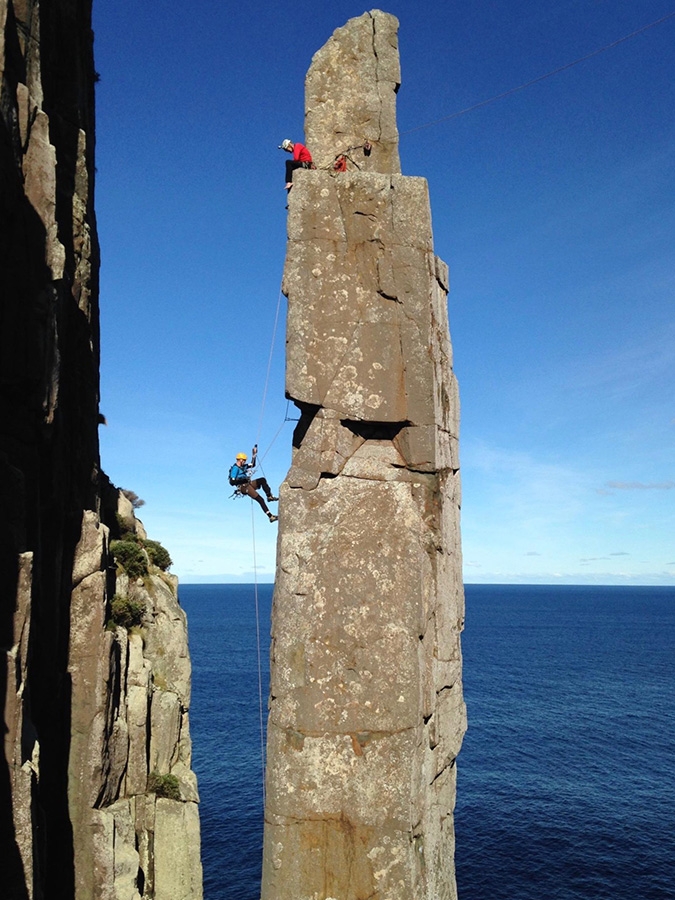
 1 / 8
1 / 8 Melinda Oogjes
Melinda Oogjes
To get there you have to walk eight kilometers, across steep hills that offer incredible glimpses onto the relentless Sea of Tasmania. 8 kilometers that may seem like a simple stroll along eight thousand meters precisely, or feel akin to an eternity, marked by struggles, doubts, uncertainty, pain but also by concrete hopes, joys, victories and conquests both small and enormous. Those eight kilometers lead to the Totem Pole, the famously beautiful sea stack that juts out of the raging waters a stone’s throw off the coast of the Tasmania. It was right there, on that vertical pillar, that one of the most dramatic events in mountaineering unfolded back in 1998: young English climber Paul Pritchard was hit on the head by a huge boulder that had inadvertently dislodged during the abseil. He fell into the sea. Managed to stay afloat. Struggled for survival. His climbing partner, Celia Bull, miraculously managed to rescue him, haul him up for 30 meters onto a small terrace before running like mad, across those eternal eight kilometers, to the nearest telephone. The story of this horrendous accident, the ensuing rescue and incredible rehabilitation - both physical and psychological - is documented in "The Totem Pole: And a Whole New Adventure", the award-winning book written by Pritchard who, despite being partially paralysed on the right-hand side of his body, has always remained true to to his irrepressible adventurous climbing soul. And so, only a few days ago and 18 years after that terrible accident, his soul led him right back there, drew him to the Totem Pole once again. And there, on those very same cliffs, Paul Pritchard reached "his" summit after a climb as long and beautiful as an entire lifetime.
After 18 years you returned to the scene of your terrible accident... one might think that during all these years you had a problem to solve, almost a sort of obsession. Was Totem Pole your white whale? Your Moby Dick?
No, not at all. The Totem Pole was the best thing that ever happened to me. Not only did it give me two beautiful Tasmanian children and a new life in Tasmania. The accident also taught me humility - not self deprecating humility that rings false, but a realistic perspective on myself and my life.
What else did this accident teach you?
Acceptance - letting the future go without anticipation. With this acceptance comes the courage to navigate the necessary stumbling stones of life. It takes courage to open your heart after it has been broken for instance. And it also taught me about grace - my Expressive Aphasia (word finding problems) has slowed down my communication with the world. Being present has forced me to take note of the beauty, tone and character of more situations. And it showed me how much we all rely on each other - rather like on a mountain where you depend on your partner. We all depend on each other. So it serves no one to hold a grudge. And that you don’t have to win to succeed - everyone has their place in society. And - when all is said and done - isn’t life just one great, continuously challenging journey for us all? I was reborn that day. How many people have two consecutive lives?
How and when the idea first came about?
I had the idea years ago of going back to the Totem Pole but never thought my arm would be strong enough to do all those one arm pull-ups (I counted a hundred and twenty-four). Then, just two months ago my friend, big wall climber, John Middendorf, who also lives in Tasmania suggested a 2 to 1 pulley system might work. I had a go in his garden and it felt doable but too complicated. So the seed of an idea had been planted and I set about experimenting with different systems. I eventually settled for a simple 1 to 1 with just one leg and one arm.
Can you explain better how this works?
With a 2 to 1 you need three devices, with a 1 to 1 you need two. This system means you are pulling all your weight. So I am pulling I 69 kilos with one arm (and one leg).
This was the "technical" solution to the problem... but perhaps you had to deal with other, deeper problems. In short, did you ever ask yourself "why the hell am I doing this?"
I was always an adventurous soul, a climber through and through before my accident. So naturally I yearned to get back to an adventurous way of life. With Mario Manica in 2009 I made my first post-accident lead at Arco - 11 years after my accident. I think, after an injury, everyone would like to get back to what their passion was before - if for example you cooked great food before your accident, then naturally you would aim to going back in the kitchen. If your passion was carpentry… you get my drift. However, now I do feel like a circle is complete. To quote Edmund Hilary "We’ve knocked the bastard off!" And it was a big team effort. There were 11 of us including Steve Monks and I, people carry kit and five people filming.
Steve Monks knows the Totem Pole well…
I asked Steve to come with me not because he made the first free ascent in 1995, but because we have a special bond over the Totem Pole - Celia (Bull) and I camped with him on the night before the accident. He then rappelled the climb after the accident to clean up the ropes and kit (this time he said he was glad the inordinate amount of blood he found previously had washed off!). I then watched him climb it with American Enga Lockey as I recorded my thoughts for a BBC documentary, one year on. He then later climbed a new route up the pole naming it ‘Deep Play’ for me.
What if anything were you worried about?
It is a terrifying environment and being down at the base brought back all these memories - being soaked to the chest by the sea - and I had to take the same swing off the belay that I had taken 18 years ago when the rope dislodged the rock. It is also a beautiful environment, with lots of giant kelp and seals were calling to us, and fairy penguins fishing in the chasm.
How did it feel to be back there, after so many years?
Having a family now and being older seems to mean that I have a firm grasp on my own mortality. When we are young we see ourselves as invincible and that is a great thing, the thing that spurs us on to be the best we can be. When we become older we often lose the momentum to be our very best. Consequently I was more fearful and had to overcome a hell of a lot more than when I was in my twenties.
This is interesting... but how much of that young, 20-year-old vagabond climber has remained?
Having said that, I am still me, and I still get a great kick out of being in such a scary place - and it is a scary place! And I even perversely enjoy feeling like I’ve been run over by a truck as I did for three days after the climb. So a lot of that 20 year old vagabond climber is still inside me.
When you reached the point where the accident happened... what did you think?
I had to gasp when I saw the scar of the rock that fell 30 meters onto my head. I imagined it to be a lot smaller. I was inspecting an orange scar that one could slide a filing cabinet drawer into! I can only imagine it broke up on the way down as a block that size would have killed me.
How did the ascent go and what did you feel on the summit?
As I said, I climbed it with Steve Monks who made the first free ascent in 1995. Although older, he hasn’t lost any of his grace and flare. Once on the summit one has to complete a Tyrollean traverse back to the mainland. I would never have thought twice about it before but now it feels completely unnatural to throw oneself off a 65 meter pillar into the void!
Now that you've finally scaled the Totem Pole, what has changed? Have you changed? And what's happened to Moby Dick?
When I got home I went straight into getting dinner ready for my family and nursing my sick daughter (nothing serious), so nothing has changed on that front. But inside as I said, I now feel like the circle is complete. I’ve closed a chapter of my life.
Having said that, I am now looking forward to my next adventure: this September myself, a blind guy, a paraplegic and a guy with 38% lung function (due to Cystic fibrosis) are going to attempt to cycle from the lowest point in altitude to the highest point in Australia. The 2100km ride from the middle of Kati Chanda (Lake Eyre -15m) to Mount Koscuiszko (2228m) has never been attempted before, even by the fully able, and much of it will be across barren desert.



 Copia link
Copia link

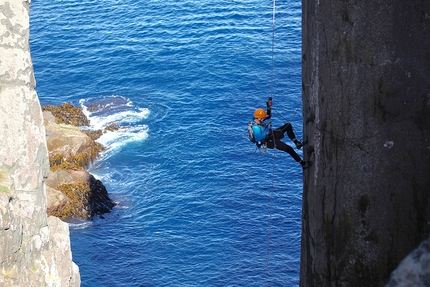
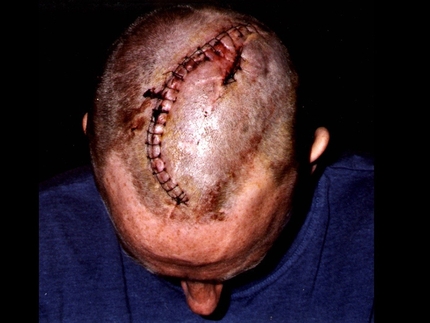
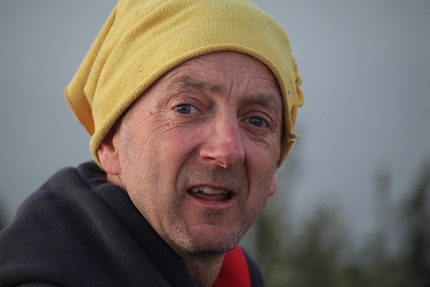
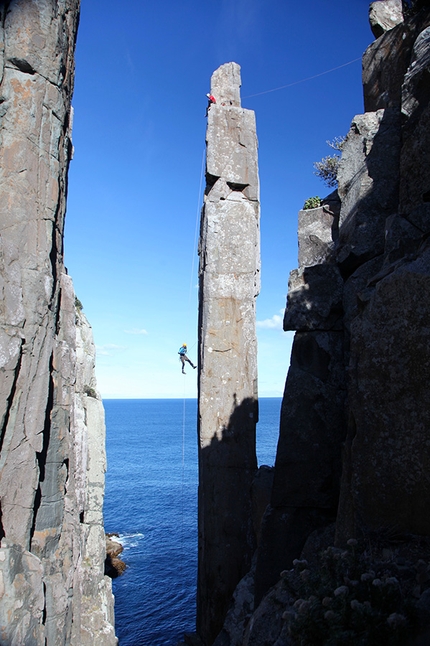
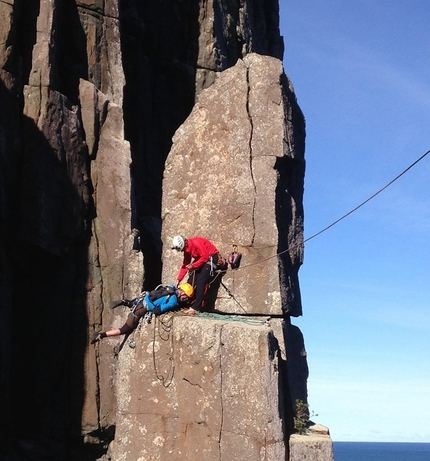
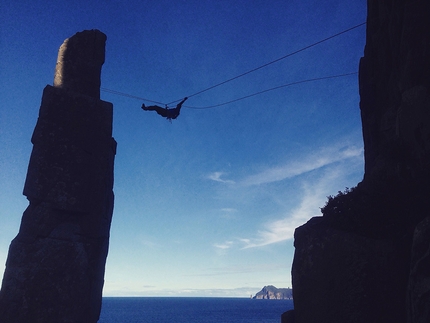
 See all photos
See all photos






















